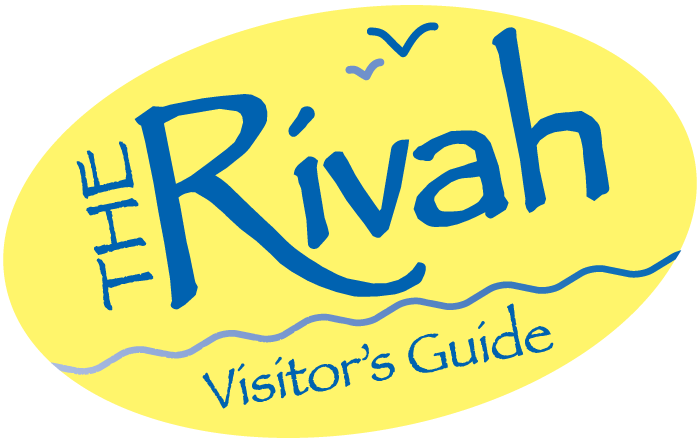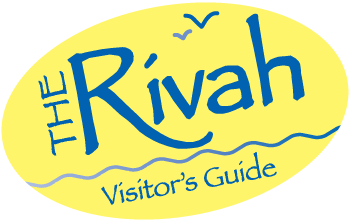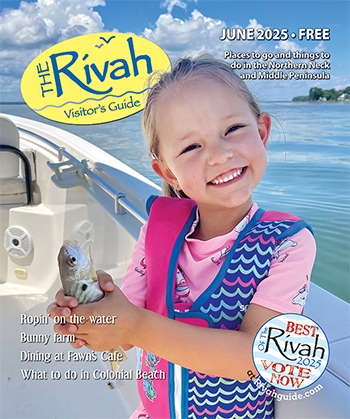We get so much joy from pets. They make us smile. Just holding them makes us whole when we are weak.
Those who have been visited by “therapy rabbits” of The Fuzzy EAR know the good feeling of being connected to a furry soul — even for a few precious moments.
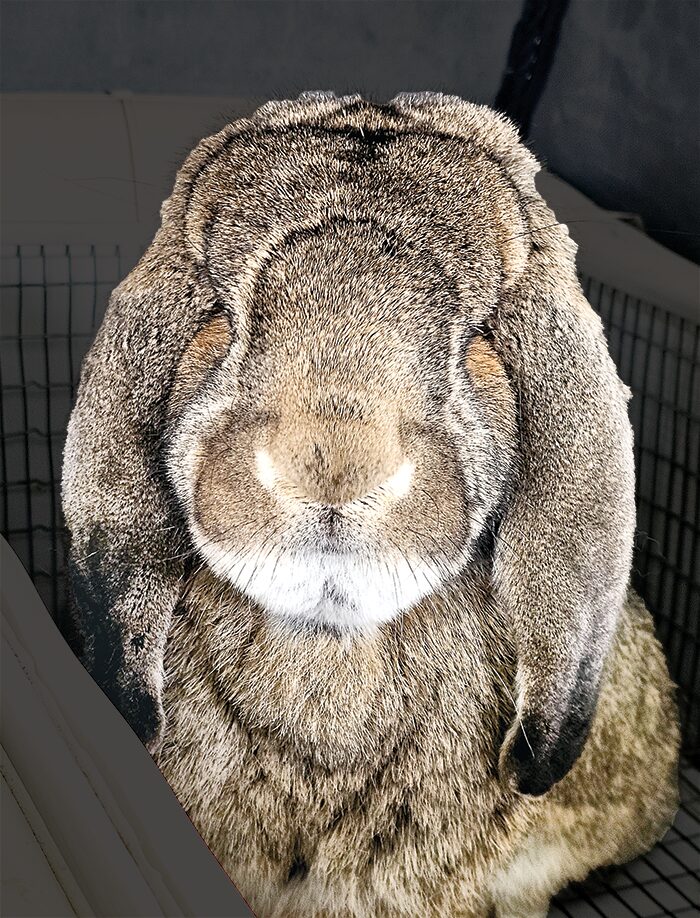
The Fuzzy EAR is a licensed English Angora Rabbitry based in Gloucester; a sort of “rabbit resort,” say owners Lorraine and Pete Hanson, who have found joy in letting others pet their rabbits. It’s a simple joy that makes people happy.
Their stories of memorable moments with people meeting their rabbits often end with laughter, “an instant vacation,” as Milton Berle said.
Smiles
From infants to the infirm, the “fuzzy love” works. Babies are enthralled.
Nursing home residents are comforted by therapy rabbits that briefly cure ailments, where other remedies fail. In their presence, troubles fall away.
One person wanted to keep the rabbit that was laid in her arms. “You can leave now,” she told the Hansons.
A bed-bound man smiled when he held a fuzzy rabbit. “That’s the first time I’ve ever seen him smile,” the emotional nurse told the Hansons. The eyes of an Alzheimer patient staring into space, lit up when he held a rabbit.
There was a woman who recently had a near-death experience. “When we put a rabbit on her lap, she cried, I cried, the nurse cried,” said Lorraine.
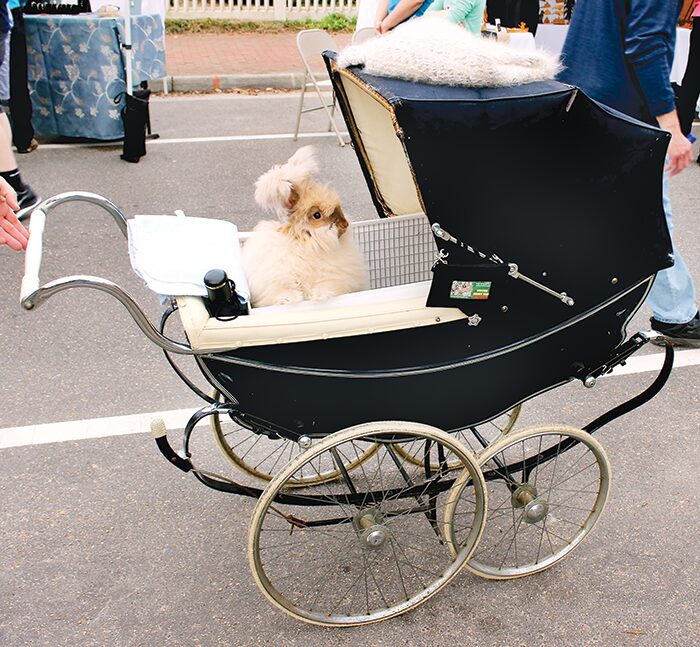
“I used to be a jerk.”
The rabbits like being held, said Lorraine. A rabbit placed on a man’s lap snuggled under his hand when he pulled it away as if to say, “Pet me, pet me.”
Both Lorraine and Pete work full time but make time to share their rabbits with others. “The therapy is not just for them, we benefit from it,” said Pete, who then joked. “I’m proof that rabbit therapy works, I used to be a jerk.”
The Fuzzy EAR rabbits are show stoppers at festivals and events. It’s not everyday you’ll see an unusually fluffy rabbit in a classic baby carriage.
A while ago, the Hansons acquired a “pram,” an antique type baby carriage. They enjoy strolling with a rabbit in it! “Is that a rabbit?” is the most often asked question.
The Hansons didn’t set out to do rabbit therapy when The Fuzzy EAR began 12 years ago, it just evolved. Their rabbits are bred for temperament, they explained. They do not breed to sell. “If we have more rabbits than we can keep, then we will sell them but only to those who have a firm grasp of the care and attention they need.”
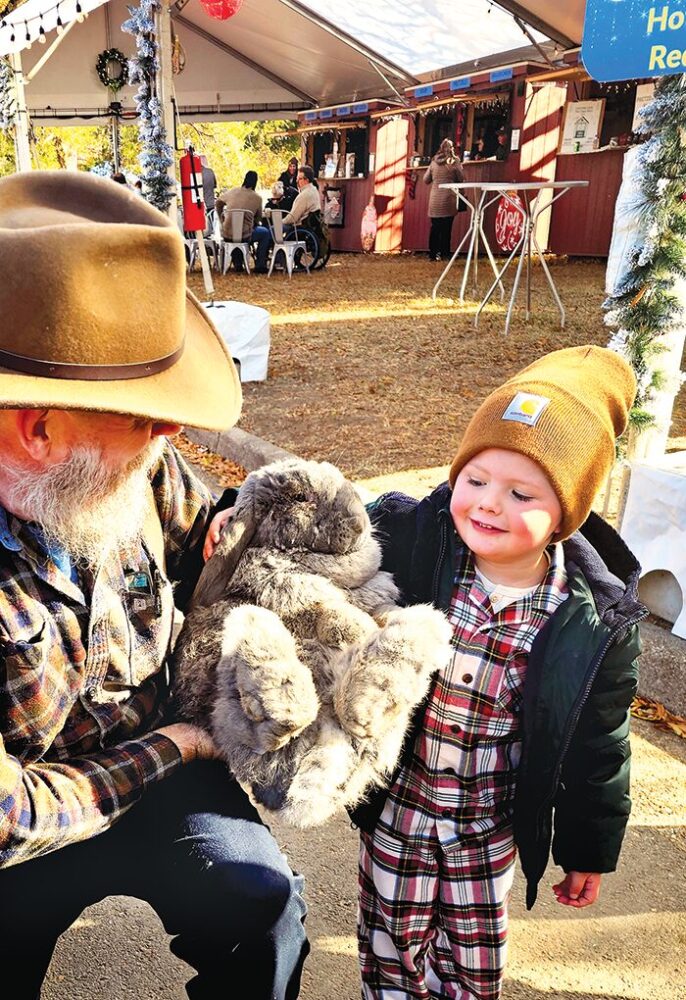
Why do you do it?
Taking the rabbits out into the public started with Pete wanting to walk rabbits on Duke of Gloucester (DOG) Street in Williamsburg, where many people walk their dogs. “We wanted to share these wonderful creatures and allow people to meet them,” said Pete. “This morphed into a lot of teaching about rabbits, as many people did not know that Angora rabbits existed. Doing this on the streets and taking the therapy rabbits in nursing homes and schools also ‘feeds our souls’ while we bring joy to others. The laughter, smiles and the rabbit ‘squee’ sounds make it all worthwhile.”
Furry friends
The Hansons discovered the value of rabbit therapy not long after they brought home their first rabbits. “Our mentor and very dear friend had a major surgery and required skilled nursing care for a time,” explained Lorraine. “As she had not yet met our rabbits, we had to remedy that situation. I placed Honeysuckle in a boat bag and put the bag on my shoulder. As I walked into Edie’s room, I closed the door and smiled, she immediately knew what I was up to. Honeysuckle sat with Edie for about an hour just enjoying the attention.”
Boost
The Hansons decided rabbit therapy would be a nice gift for animal lovers who are not able to live independently. “This has been a positive side of the rabbits. People really love meeting the rabbits and being able to pet them.”
The Fuzzy EAR rabbits go to Williamsburg Landing and The Hamilton on a regular basis and have been to numerous area nursing homes, and pop up at area festivals. “We have quite a following.”
Exam week
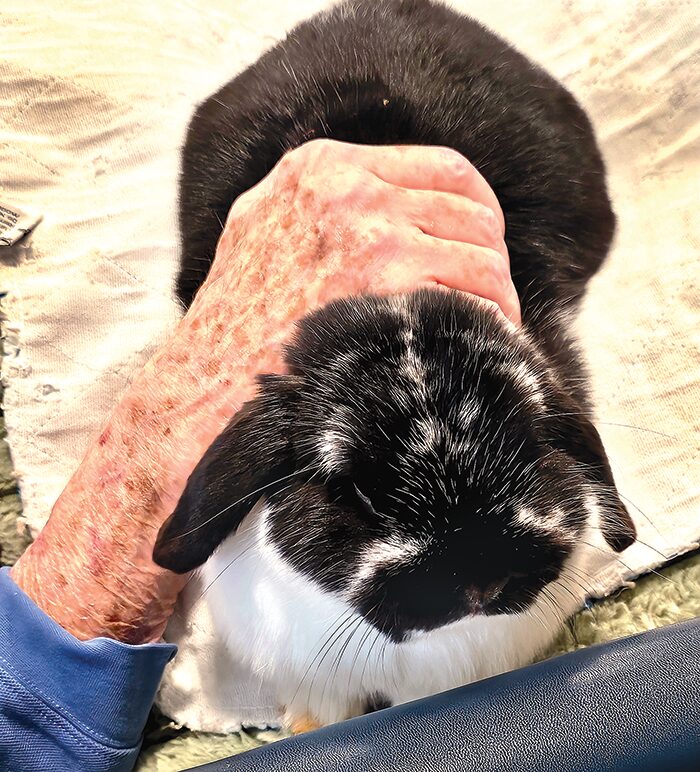
The rabbit’s stress-relieving effect works for college students. For about seven years they have also been going to the College of William & Mary during exam weeks in May and December. “We bring a large number of rabbits and set up in Swem Library for a few hours,” she said. “During our time there, we have a constant flow of students and faculty. We have even had students tell us that the rabbits are better than the therapy dogs.”
Helping one another
The Hansons currently have 21 rabbits, each in a large cage with toys, food, water, and hay. “We have learned that they like their space and want it set up their particular way. For example, if I put the water or food bowl on the wrong side of the cage, some of the rabbits will move it.”
Their rabbits are social. “I believe they watch out for each other,” said Lorraine. “If one hears something, they will thump to warn the others.”
Years ago, they had two young rabbit sisters living in separate cages in the house. “I was awakened at two in the morning to the continual thump, thump, thump, said Lorraine. “When I went to investigate, Iris’s cage floor had let go and she was sitting in the lower collection tray. Her sister, Fannie, was thumping to let us know something was wrong.”
Why Rabbits?
Lorraine has been knitting for many years and only likes to use good quality yarns. “Life is too short to knit with substandard yarns,” she said.
They initially wanted to get alpacas, but learned their property is not zoned for alpacas. They would need more land and alpacas are a lot more work.
Pete did some research and learned about Angora rabbits. “We actually found an English Angora breeder here in Gloucester and she became a dear friend. We spent about a year learning about rabbit care and behavior before we were comfortable bringing our first rabbits home.” That was in 2013.
About five years ago the Hansons discovered French lops and fell in love with them. “Once again, we found ourselves an adopted daughter,” said Lorraine. The woman who introduced them to French lops has become part of the family.
“We started adding French lops to our array of therapy rabbits. We have actually had the American fuzzy lop breed since we started with the Angora rabbits. It is nice to have the variety of rabbits and it has worked well for us.”
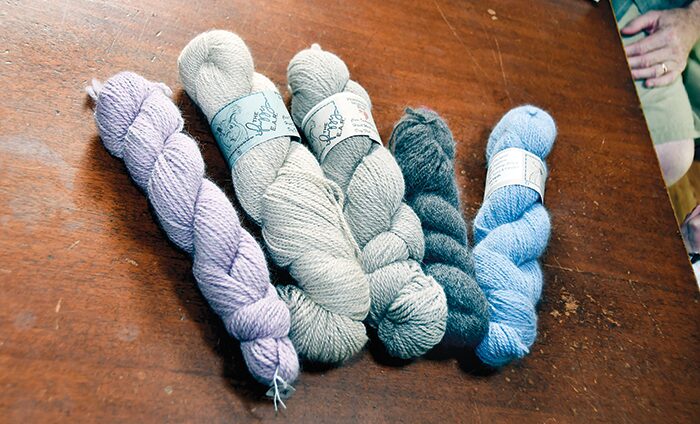
Rabbit wool
Rabbit fur, which is called “wool,” can be clipped every four or five months. “We get approximately four ounces with each cutting depending on the rabbit and collect it until I have enough to make yarn,” Lorraine said. Each Angora rabbit’s wool is kept in separate containers. She purchases fine wool sheep fleeces (merino, cormo, rambouillet, romney, corriedale) and blends it with their Angora wool.
“I will also sometimes add alpaca, or silk or mohair from Angora goats. I aim for about a 20-30% Angora content in my yarn blends.”
The yarn is spun at Lancaster Creek Spinnery in Farnham on the Northern Neck. “Pete and I then sell these yarns at fiber festivals and other local venues. We are also looking to get into online selling from our website.
Pete has also started making Inkle looms to sell. “We are both of the opinion that we need to get the next generation invested in the fiber arts for the future,” said Pete. “We will ultimately be looking into teaching beginner Inkle loom classes as well as selling the looms.”
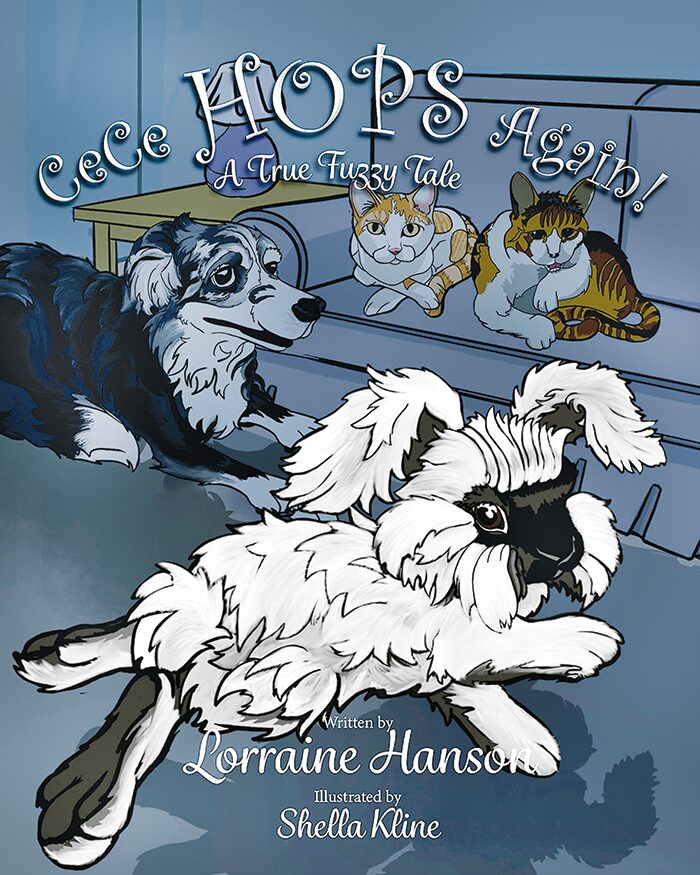
“Cece Hops Again!” by Lorraine Hanson is the true “fuzzy tale” of the bunny who learned to hop again.
Years ago, Lorraine and Pete Hanson’s rabbit, Cece, had a brain infection that weakened her in the hind end to the point where she could not lift herself up to stand with her back legs. They took Cece to see Dr. Bonnie Brown at Jolly Pond Veterinary Clinic in Williamsburg. “Since Cece had youth on her side, we decided to attempt treatment and rehabilitation,” said Lorraine, adding most people who raise rabbits will cull those with this infection.
“We gave her medication twice daily and developed a rehab program complete with a sling and positioning rolls. Ultimately, she was able to stand and ‘hop’ again! We realized that we had everything we needed to help this rabbit live a full life despite her mobility issue.”
“My niece, Shella Kline, who is a wonderful artist, illustrated the book and we decided to turn Cece’s story into a children’s book. It has been a long journey, but we are making progress.”
The book will be available in print and online at thefuzzyear.com.
